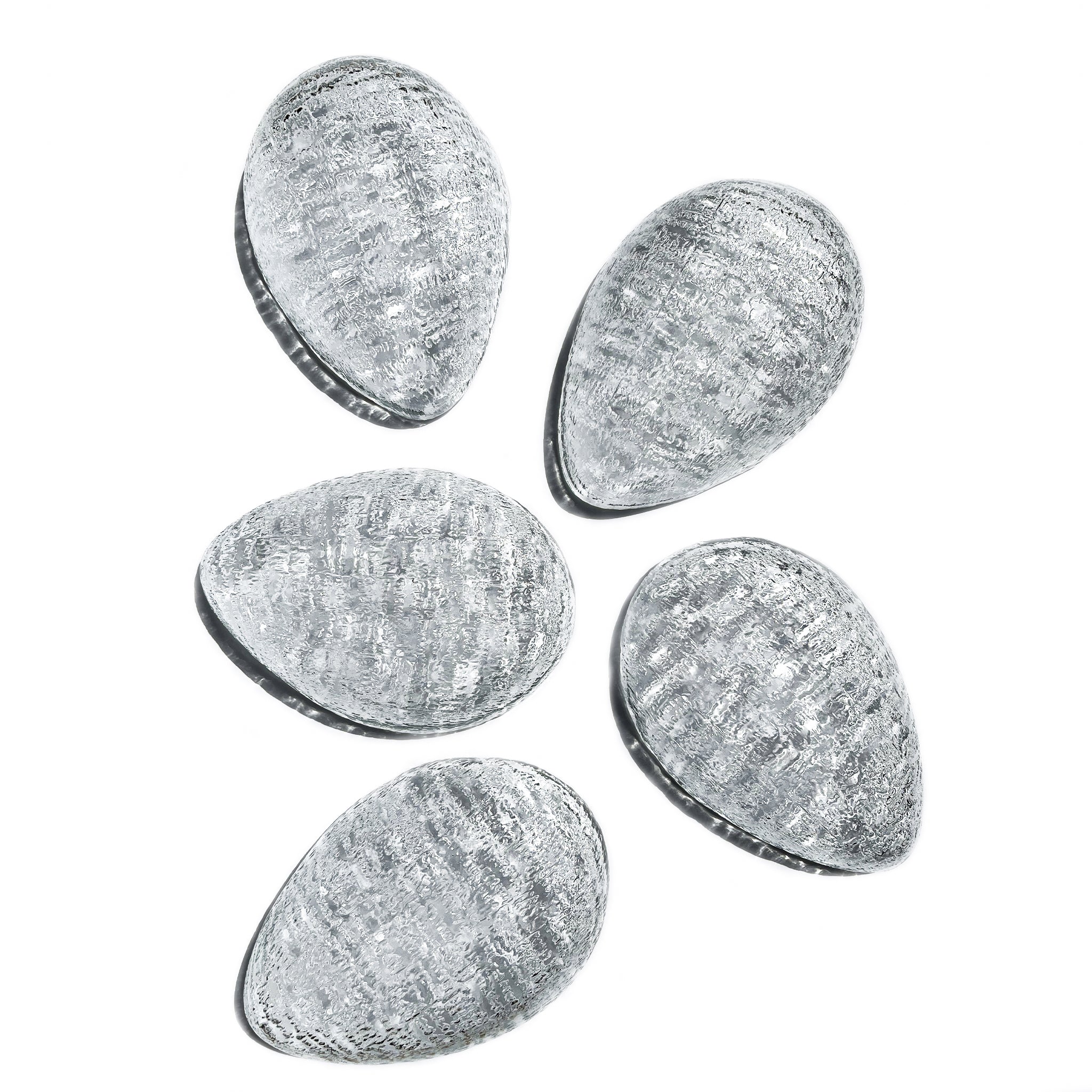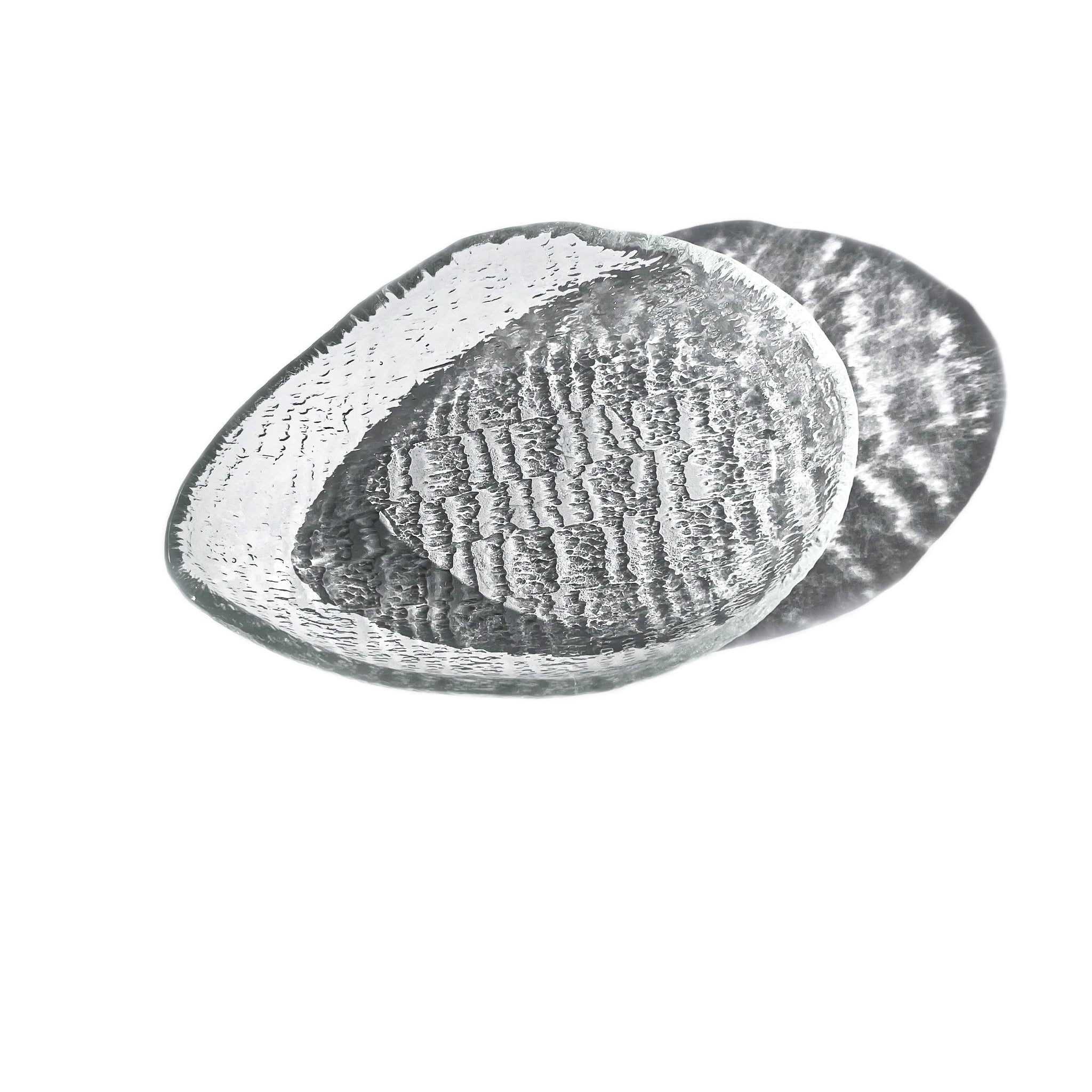Set of 5 ice-like textured glass plates designed by Drost for Zabkowice Glassworks, Poland, 1970s.
Set of 5 textured glass plates designed by J. & E. Drost for Zabkowice Glassworks, Poland, 1970s.
These glass plates embody a tactile vision of design where nature, materiality, and form are inseparable. Their elongated teardrop silhouette departs from traditional geometry, while the textured surface — reminiscent of frozen lakes or snowdrifts — conjures the sensorial landscapes of Northern and Eastern Europe.
Rather than aiming for optical perfection, these pieces privilege sensation: the interaction of hand, light, and surface. Each plate becomes a topographic fragment — an artefact not only of domestic function, but of artistic and geographic resonance. The glacial relief catches and refracts light, making them performative on the table, alive in changing atmospheres.
The Drosts pushed the boundaries of pressed glass production into a realm of poetic experimentation. Jan Sylwester Drost’s work is now held in institutions such as the Corning Museum of Glass in New York, highlighting his importance in 20th-century glass design.
This set functions simultaneously as serving ware and visual composition — a quiet assertion that even the most humble rituals deserve beauty shaped by time, touch, and light.
OBJECT SPECIFICATIONS
PRODUCT: Set of 5 textured glass plates
DESIGNERS: Jan Sylwester Drost & Eryka Trzewik-Drost
MANUFACTURER: Huta Szkła Gospodarczego / Glassworks Ząbkowice
ORIGIN: Poland
PERIOD: 1970s
MATERIAL & TECHNIQUE: Pressed glass
COLOR: Clear, transparent
TEXTURE: Frost-like relief, characteristic for the 1970s glass design
CONDITION: Exceptional condition — unused
DIMENSIONS: (+-) Width: 10.5 cm; Length: 15.5 cm; Height: 3.5 cm

Jan & Eryka Drost
Jan Sylwester Drost (1934-2024) and Eryka Drost (1931) emerge from the rich fabric of Polish design, where craftsmanship and bold expression intertwine. Their work — vivid, textured, and tangible — evokes a tactile dialogue between surface and structure, tradition and modernity.
Renowned for their pioneering glasswork produced in collaboration with the Ząbkowice glassworks, the Drosts masterfully explored the tactile dimension of glass. Their pieces — richly textured, sculptural, and often asymmetrical — challenge the material’s traditional transparency, inviting the hand to read surface as much as the eye. This focus on texture and form resonates with contemporaneous glass innovations in Finland and Sweden, where designers similarly pushed glass beyond its functional role toward expressive, almost geological objects.
Their work has transcended regional recognition to become part of the global narrative of modern glass. The National Museum in Warsaw and National Museum in Wrocław holds key pieces by Jan and Eryka Drost — showcased in a retrospective that elevated their designs from everyday use to museum-worthy objects. Jan Drost’s work is part of the permanent collection at the Corning Museum of Glass, confirming his place within the international canon of glass design. These references highlight how the Drost’s sculptural and tactile glass language has earned its place in 20th-century design history — in dialogue with major glass collections worldwide.


